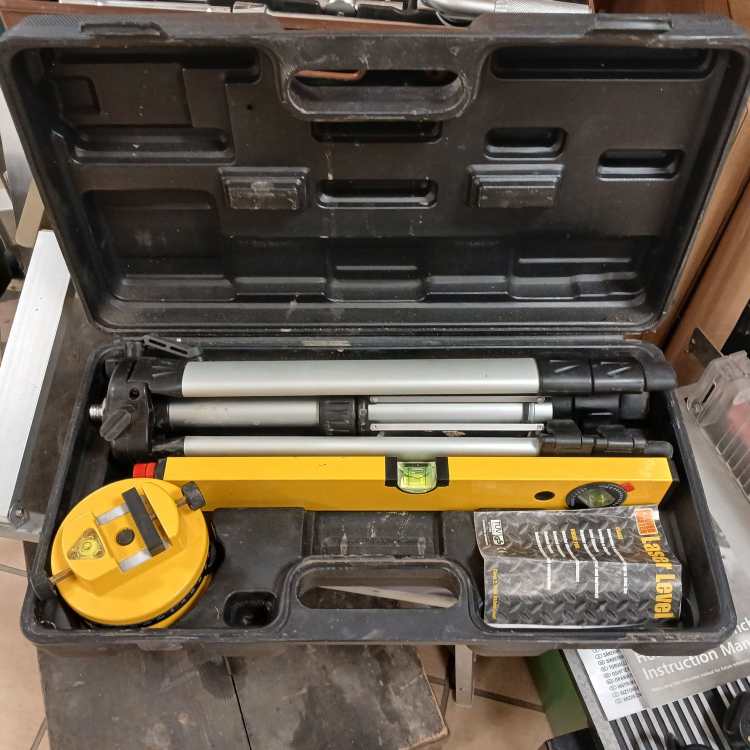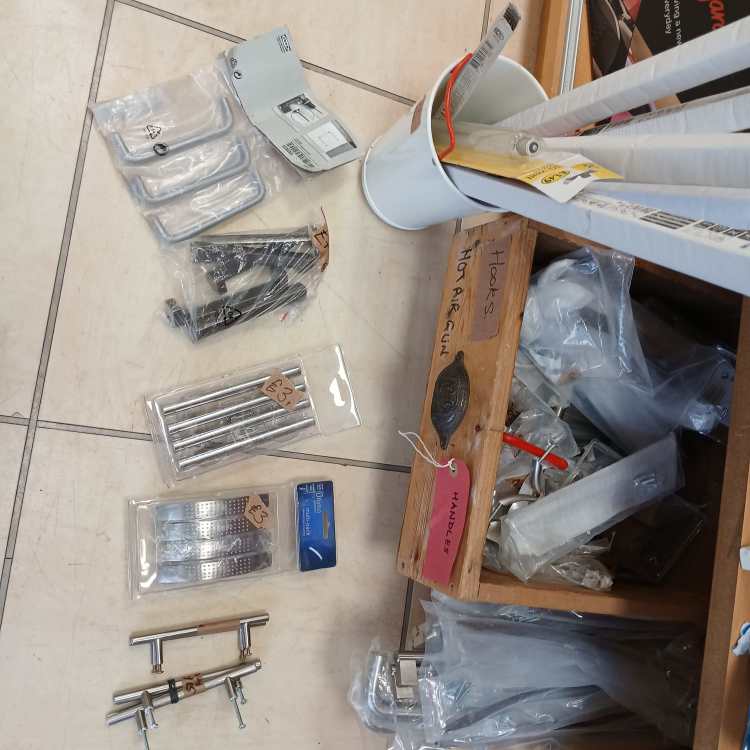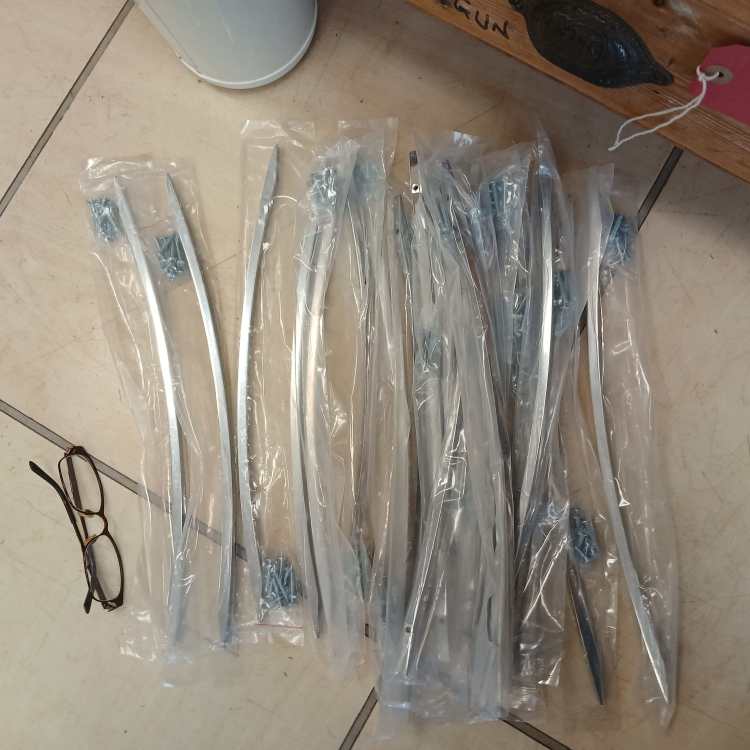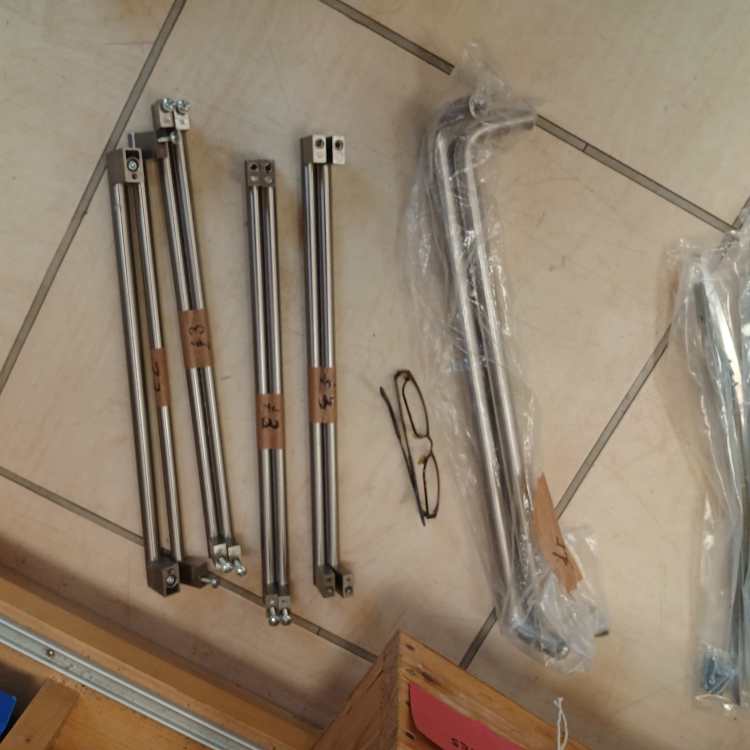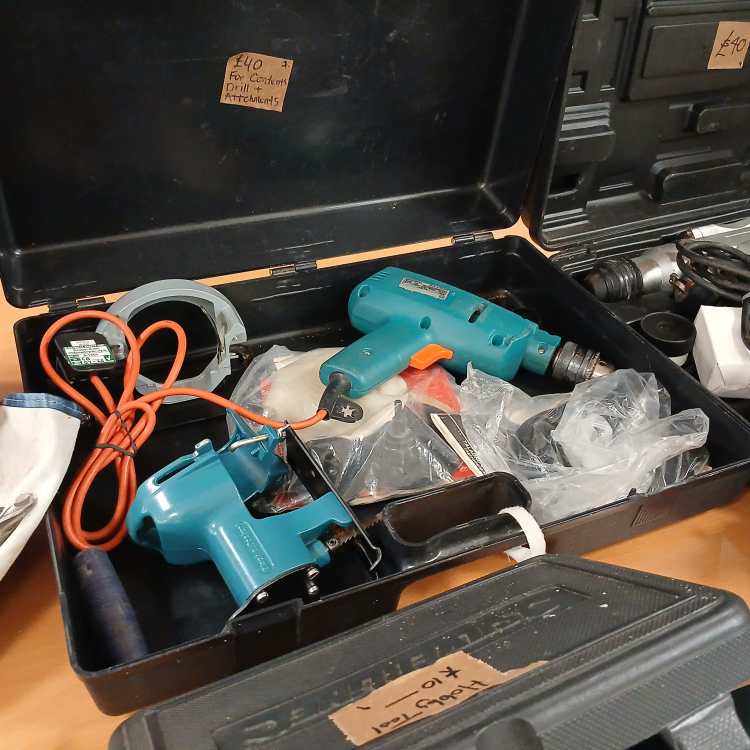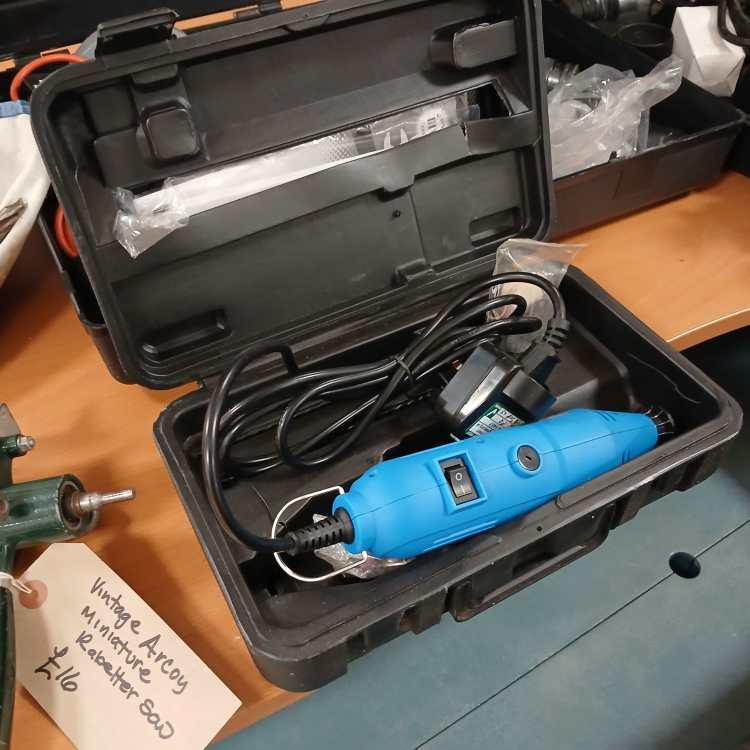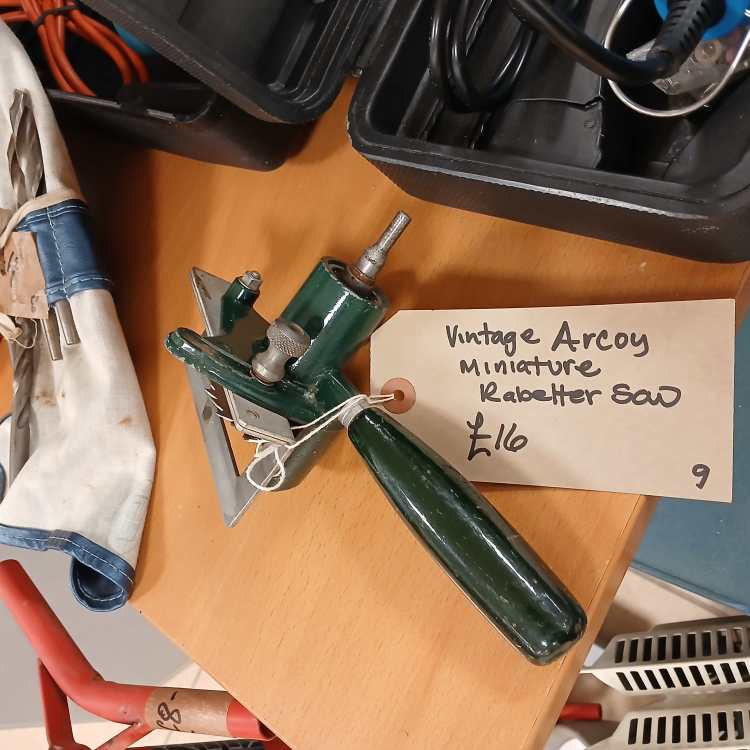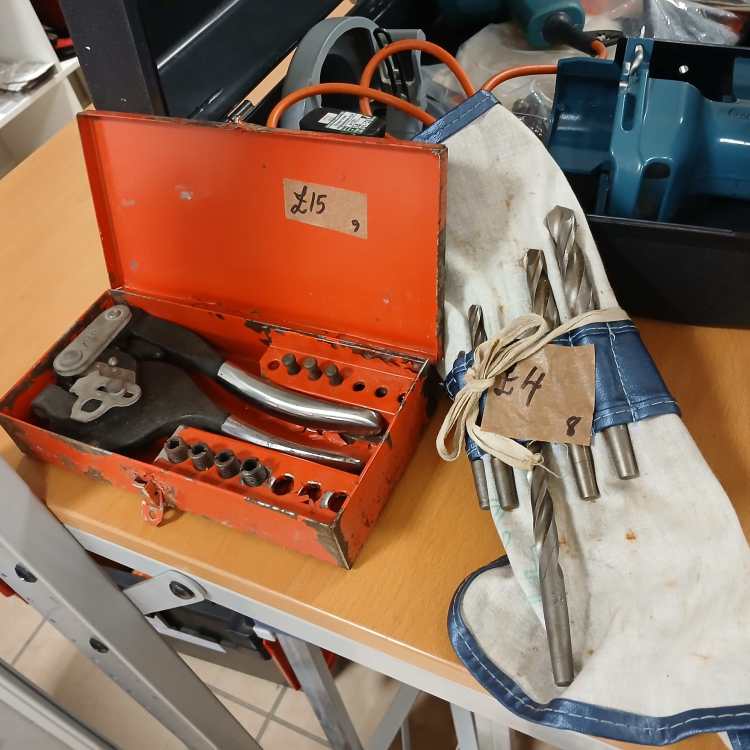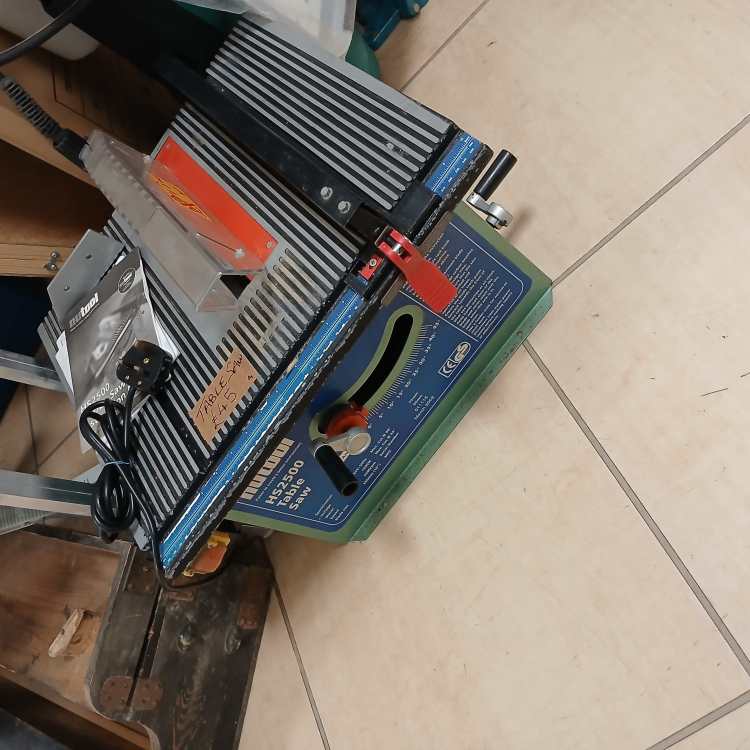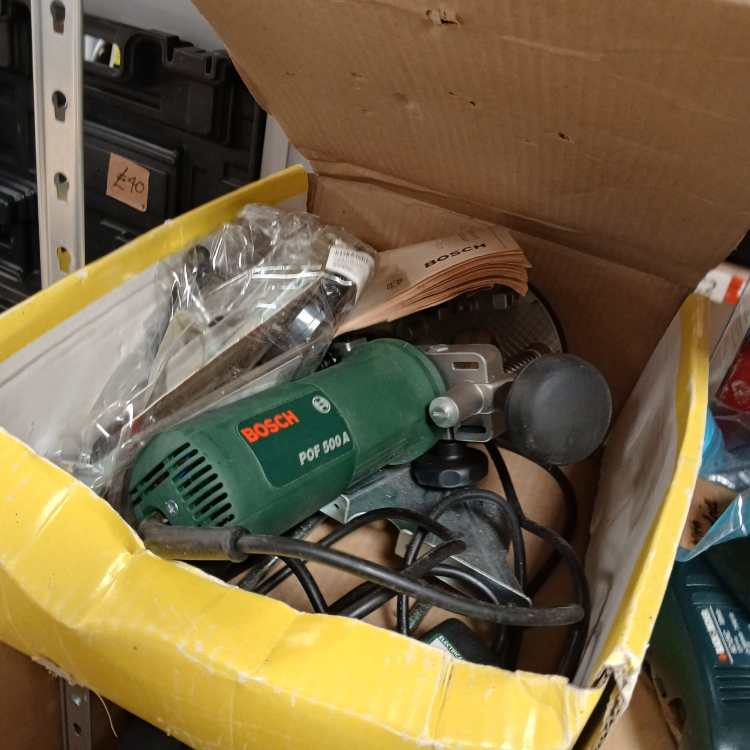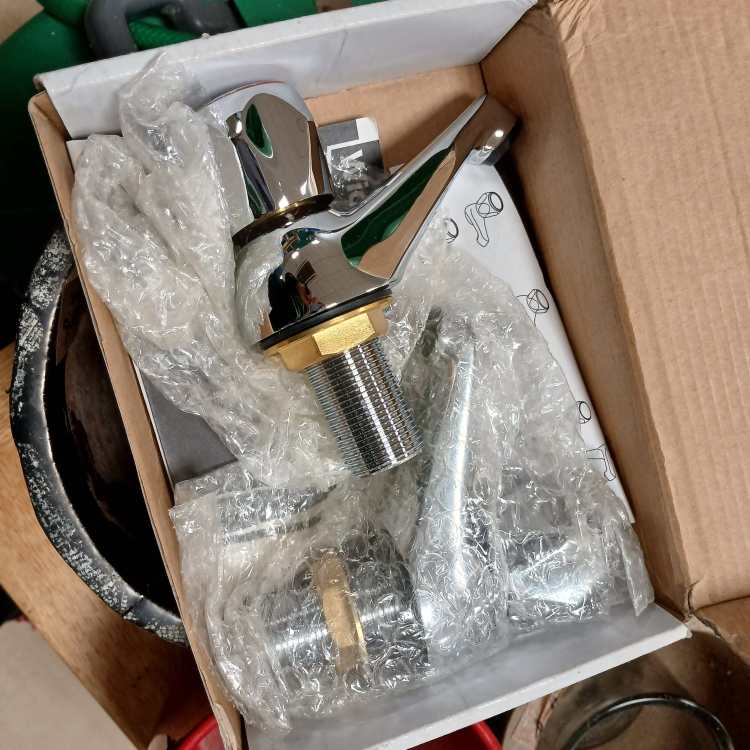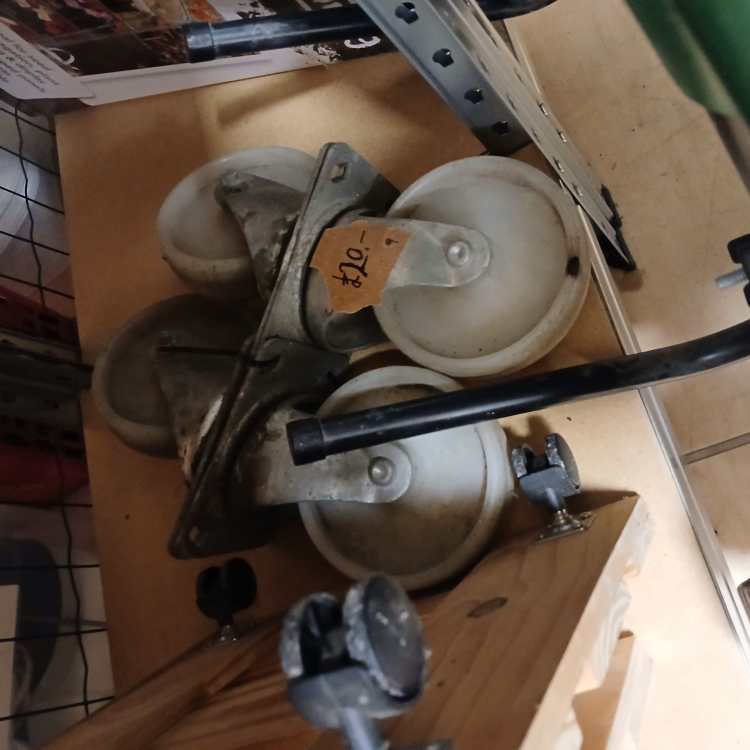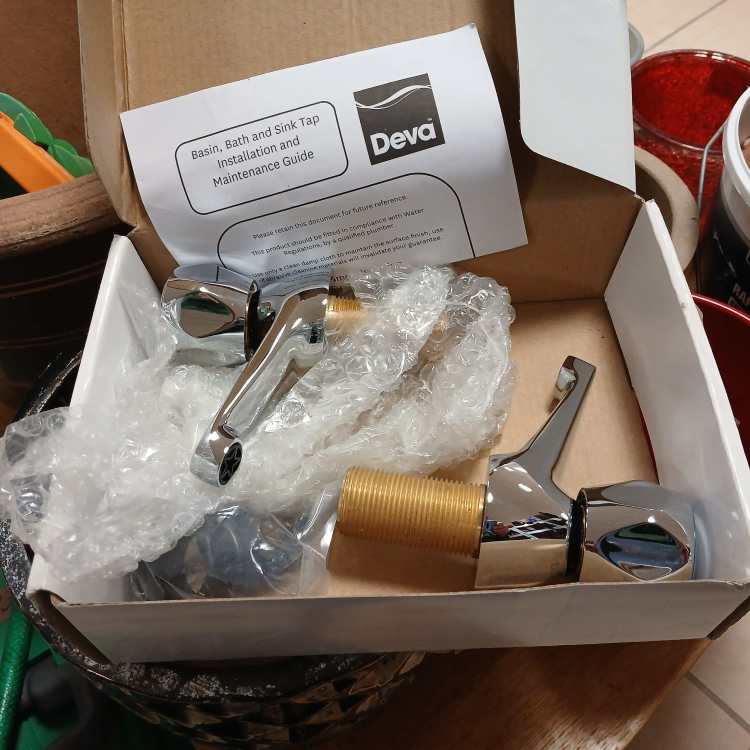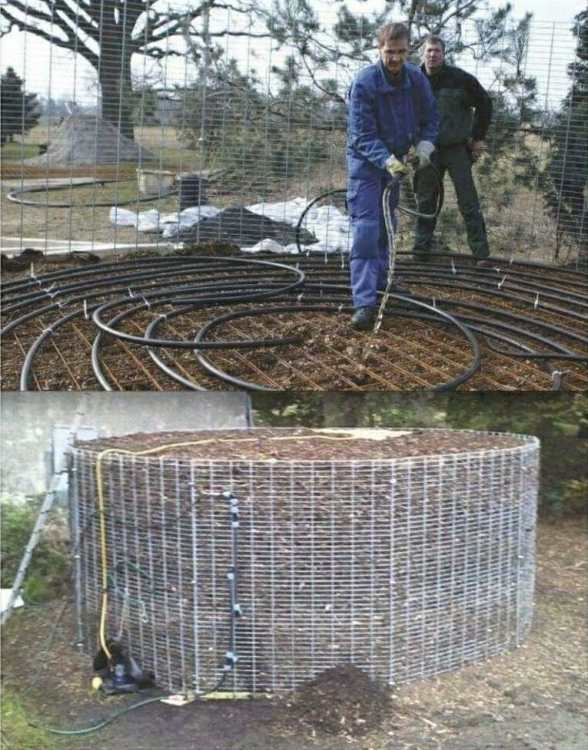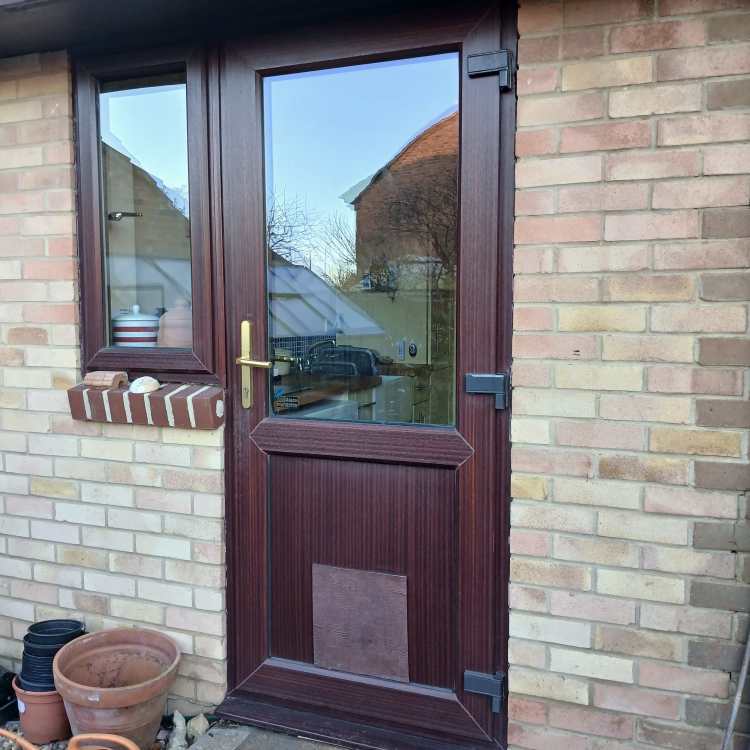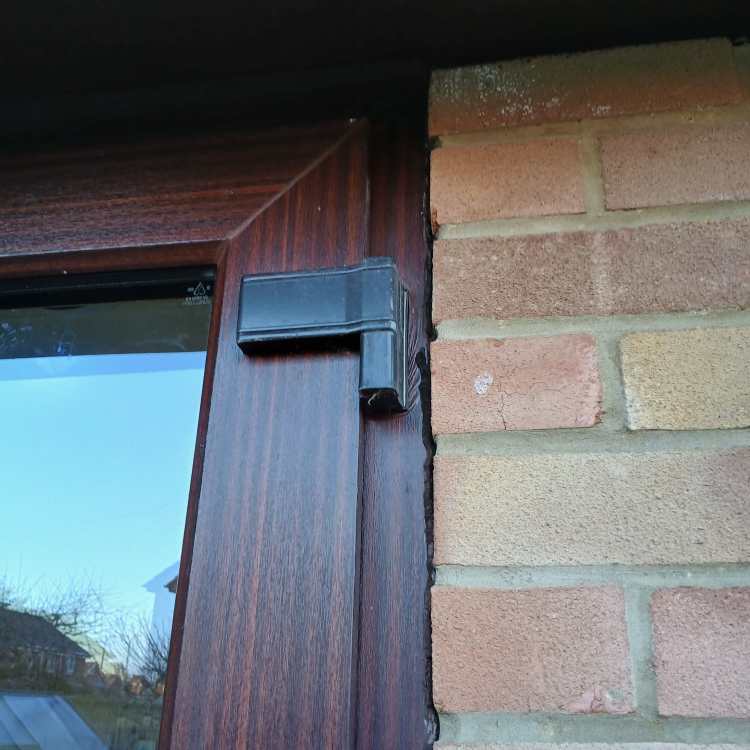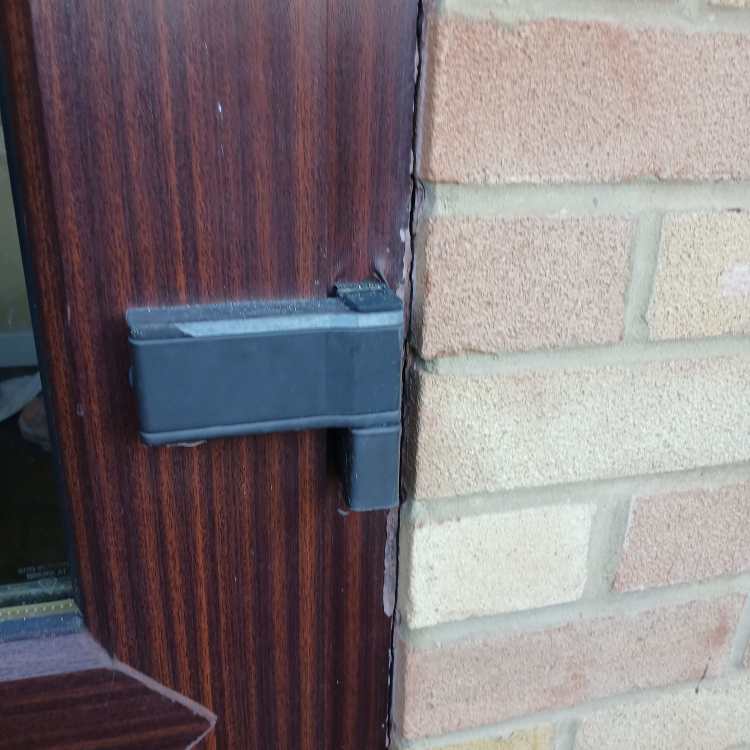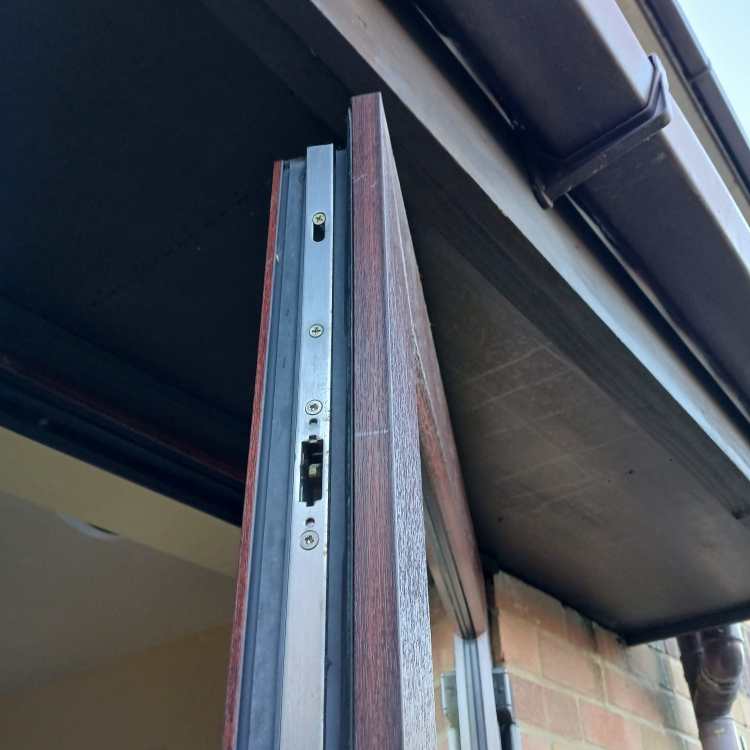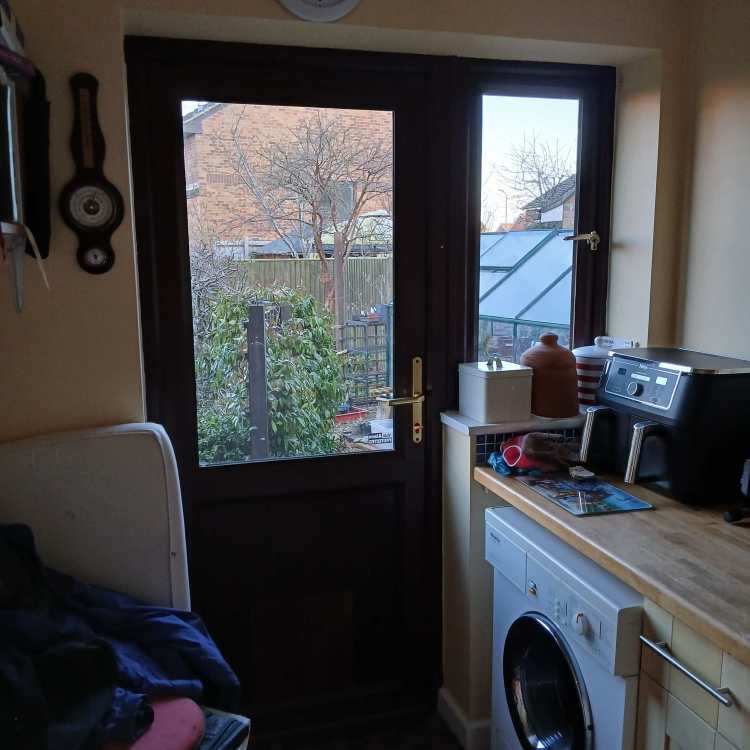-
Posts
891 -
Joined
-
Last visited
-
Days Won
2
Everything posted by TheMitchells
-
Looking forward to hearing all about the build! Though I did have to look up what Barcelona Pavilion and Brutalism would look like....😄
-

The ASHP install. Lots of heating on/heating off then fingers crossed.
TheMitchells commented on TheMitchells's blog entry in Renovation of Ellesmere Bungalow.
Oh and an update re the house move to the place next door to Mum and Dad's - it all went pear shaped in March, after months of delays from the place at the top. our buyers pulled out and found another property. we tried to find a new buyer but after a few weeks, we decided to stay where we are and continue as now. Mum and Dad were upset as they really wanted us closer, but both the OH and I are rather glad that we are staying in our current house, which we love. Its only 15 mins drive to the parents so i'm managing. 🙂 -

The ASHP install. Lots of heating on/heating off then fingers crossed.
TheMitchells commented on TheMitchells's blog entry in Renovation of Ellesmere Bungalow.
quick update - purging air first thing every morning by opening windows for half an hour or so. Also have bought a Puremate dehumidifier which is removing around 1-2 pints of water each day from the main room. I'm sure the purge will be shorter as it gets colder but at least they are doing it. The Heat pump seems to be working well as the hosue is always warm with plenty of hot water. Now I just need to arrange a service, to maintain the warranty. Unfortunately, there are very few companies doing ASHP servicing. The only one i can find is the installing company. Lets hope more start doing servicing soon, it may bring down the cost. I shall be watching to see what they actually for for the £250 they are quoting. -

Second hand tools/stuff in Bicester, Oxfordshire.
TheMitchells replied to TheMitchells's topic in Tools & Equipment
Thought I'd remind everyone of the shop and post some pictures of the stuff currently in the shop. Always worth a visit, if in the area, as there are tonnes of useful stuff. We have electrical, plumbing, decorating, as well as diy - nails and screws galore. Locks/handles/so much odds and ends. On Sheep St, Bicester, Tues to Sat 10-4pm. I'm there Tuesday mornings 🙂 -

Starting a self build and reno in Ireland
TheMitchells replied to Jess Shannon's topic in Introduce Yourself
looks a really interesting build - cant wait to hear more about it. Please do a blog for the process, if able (and if you have time).😄 -

Heating your house with compost!
TheMitchells replied to TheMitchells's topic in Other Heating Systems
At a town near me, the council allow tree surgeons to dump all their tree waste on a waste site and anyone can go and help themselves to the bark. I have used it quite a lot and when collecting it (a trailer load takes me about 20 mins to fill), the heat coming from the heap is amazing. So I'd be okay, I'd just go and get a new load and keep replenishing the composter. 😄. And bark is slow to decompose - should last quite a while. -
Hows this for an idea? And as a compost heap does get very hot - why not? From Unwaste the Planet on FB.... Instead of burning wood for warmth, more and more people are turning to a clever, low-cost alternative: building a compost pile over coiled plastic water lines from the hardware store. As the plant material decomposes, it naturally produces heat — reaching temperatures of up to 149°F (65°C). With a simple circulating pump as the only moving part, this compost heating system is remarkably reliable, lasting on average 12 to 16 months and sometimes up to two years, while providing enough energy to heat a 1,500 sq. ft. home and supply up to 80% of its hot water.
-
quite a lot there - no it is not just a matter of leveling and adding fertiliser. If you have used a digger, the soil will be very compacted where the wheels went and the grass there will not establish and grow very well. If you want a nice lawn, then you really need to level, but then uncompact the soil - digging over the conpacted areas (by hand or with a machine), level with a rake, gently compress with your flat feet, rake again and then spread seed. Turf is instant but quite expensive. Seed is cheaper but will take the winter to establish. There are plenty of video's which show you how to do it. https://www.gardenersworld.com/how-to/maintain-the-garden/how-to-prepare-the-ground-for-laying-turf/ https://www.rhs.org.uk/lawns/lawns-from-seed While it is a lot of work, you'll be looking at the lawn for a long time so it is worth doing it properly. Good luck. And now - September is the perfect time to do this!
-
Some good information here - https://www.ecomerchant.co.uk/news/a-guide-to-wall-insulation/?srsltid=AfmBOopYEZ0zPHIDv7V7AU-XHGBdyHnT9-3abVEqoQUjtf-xz6BzpHQ7 SOme of that may be of use.
-

Let the fun begin!
TheMitchells commented on Benpointer's blog entry in Contemporary build in north Dorset
Loving the plans, sounds just what i hope to do when we can sell up and move. Currently looking after elderly parents so unable to make the move yet, but i still look for places we could move to. I shall keep your architects details as your plans would suit us too, and the spec is exactly what I would like. Will enjoy reading about the build - Good Luck! -
i thought it was best to not paint inside? But i may be wrong. We had ours occupied for a few days but as we kept checking,maybe it was fed up with being disturbed as i has not been back😒
-
Sounds excellent to me! well done. So lucky to have Steve to help. 😊
-
i hadnt but they look good so shall get it ordered soon. thanks.
-
I'm looking to buy a potting shed from Tiger Sheds - for my plants as well as lots of gardening stuff that is currently tucked behind various shrubs. However, the price seems very resonable, compared to others i have seen, and i am wondering if its because its not very good? As it is just for plants, and not for working in, it doesnt really matter if its not very windtight. Doe anyone have any experience and can assure me that it will work fine as a shed. I would be happy to add some additional sparing if needed and re-cover with felt every few years. But they cost around £700 (8x6ft) compared to another nearer £3k! It did come painted and with an extra shelf but thats alot to pay for a shelf and some paint....
-
One recommendation from me is to visit the National Self Build and Renovation centre in Swindon. Particularly when they have an Open Day as loads of information and seminars. Free too. I did their 3 day course when i planned to self build, and even though we were planning to use a cmpany, i still learnt so much. All good stuff which helps when dealing with companies and tradesfolk. Good luck with the project.😀
-

Installing suspended timber floor with PIR
TheMitchells replied to tommyleestaples's topic in Heat Insulation
Have a look at gapotape for a really good fit of the insulation - several YouTube video's have shown how hard it is to get a good fit just by cutting or expanding foam. This video gives a good demo. Costs more than foam but should give a perfect fit and no air leaks ☺️ -

The (not so) secret diary of two self builders, one aged 62 and a half…
TheMitchells commented on G and J's blog entry in Da Bungalow
Personally, i love the ramblings! Carry on, i cant wait to hear the rest😄 -
The renewable heating industry is on the cusp of a significant transformation, and the Flexi-Orb Heat Pump Scheme is at the heart of this change. As we’ve reported previously, this initiative aims to address the shortcomings of the existing Microgeneration Certification Scheme (MCS) by offering a more practical, installer-friendly approach while maintaining rigorous standards. Today, we bring you the latest updates on the scheme’s progress, including its submission to UKAS, the development of a comprehensive Heat Pump Code of Practice, and plans for a pilot validation process ahead of its anticipated launch later this year. But beyond the technical details, this update also explores why this new scheme matters – not just for installers and manufacturers, but for homeowners too. Flexi-Orb Scheme Submitted to UKAS for Assessment As of last week, the Flexi-Orb Heat Pump Scheme has been formally submitted to the United Kingdom Accreditation Service (UKAS) for assessment. This assessment will be conducted against the ISO IEC 17067:2013 standard, which ensures that certification schemes meet rigorous international benchmarks for conformity assessment. This is a significant step forward, as UKAS accreditation will provide the scheme with the credibility and recognition needed to operate alongside existing standards like MCS. David Lindsay, Director at Certi-fi Schemes Limited (Flexi-Orb and EPVS), commented on this milestone: “I’m pleased that we’ve submitted the scheme to UKAS, but it’s just one step forward. There’s still a lot of work for us to do, none of which we’re taking for granted. Thankfully, we’ve had some great input from a wide range of stakeholders, and this has to continue if we’re going to meet industry needs. We’re an open door. If anyone wants to work with us to improve the outcomes for consumers, which is where we start, then we’re interested.” For homeowners, this means greater choice and confidence. A second accredited scheme introduces healthy competition into the market, driving up standards and encouraging innovation. It also provides an alternative pathway for installers, which could lead to more competitive pricing and better service as companies vie for business under both schemes. Heat Pump Code of Practice: Refinements and External Input The development of the Heat Pump Code of Practice, a cornerstone of the Flexi-Orb scheme, is continuing to progress through its working group. Recently, the working group received additional input from external verification companies, particularly around two critical areas: noise calculations and heat loss calculations. These refinements will ensure that the Code of Practice addresses key technical challenges faced by installers, providing clear and actionable guidance to achieve optimal system performance. For homeowners, this translates to better-performing systems. By focusing on practical, real-world issues like noise and heat loss, the Flexi-Orb scheme ensures that heat pump installations are not only compliant but also optimised for comfort and efficiency. This means lower running costs, quieter systems, and homes that stay warm without excessive energy use – key benefits that directly impact the homeowner experience. Once finalised, the Code of Practice will be accompanied by a Heat Pump Design and Installation Guide, which will be made available to all scheme applicants. This guide will serve as a comprehensive resource for installers, offering step-by-step instructions to streamline the installation process. Additionally, an assessment checklist will be provided, outlining exactly what assessors will evaluate during inspections. This transparency has already proven popular in Flexi-Orb’s existing certification schemes, as it eliminates guesswork and ensures both installers and assessors are aligned on expectations. Pilot Validation Process Set for April 2025 Flexi-Orb has announced plans to begin a pilot validation process next month (April 2025). This pilot phase will test the scheme’s practical application, allowing Flexi-Orb to gather feedback and make any necessary adjustments before the full launch. The pilot will also mark the final steps towards adding the heat pump scheme to the scope of Flexi-Orb’s Certification Bodies, which operate under the ISO IEC 17065:2012 standard. For homeowners, the pilot phase is a reassurance that the scheme has been rigorously tested before being rolled out. It means that when the scheme launches, it will have been tried and tested in real-world scenarios, reducing the risk of teething problems and ensuring a smoother experience for those investing in heat pump technology. Launch Plans: Targeting June/July 2025 Flexi-Orb is targeting a full launch of the heat pump scheme in June or July 2025, though this timeline is dependent on external factors, particularly the completion of the UKAS assessment process. Regardless of the exact launch date, Flexi-Orb has confirmed that it will provide detailed information about the scheme and announce a firm launch date at the Installer Show in June 2025. This announcement will be a major moment for the renewable heating industry, as it will mark the culmination of years of effort to create a more practical and effective alternative to MCS. With its focus on installer-friendly tools, clear compliance, and robust quality assurance, the Flexi-Orb scheme is poised to raise standards and deliver better outcomes for everyone involved. Why a Second Scheme Matters for Homeowners The introduction of a second accredited scheme like Flexi-Orb is not just a win for installers and manufacturers – it’s a win for homeowners too. Here’s why: 1. Increased Competition Drives Better Outcomes Competition is a powerful motivator. With Flexi-Orb providing an alternative to MCS, both schemes will need to continually improve their offerings to attract installers and manufacturers. This could lead to better training, more innovative products and higher standards across the board; all of which benefit homeowners. 2. Higher Standards for Performance and Comfort Flexi-Orb’s focus on practical guidance (such as noise and heat loss calculations) means that installations under this scheme are likely to perform better in real-world conditions. For homeowners, this means systems that are quieter, more efficient and better suited to their specific needs. 3. Greater Accountability and Consumer Protection Flexi-Orb’s proactive approach to quality assurance, including instant feedback mechanisms, ensures that any issues with installations can be addressed quickly. This reduces the risk of subpar installations and gives homeowners peace of mind that their investment is protected. A Scheme That’s Installer-Friendly but Challenging While Flexi-Orb is designed to be installer-friendly, it’s important to note that the scheme is already more challenging to achieve than MCS in some respects. A key difference is Flexi-Orb’s emphasis on office assessments, which ensure that the administrative and logistical aspects of an installation (such as DNO approval and aftercare infrastructure) are handled correctly. This approach not only raises the bar for installers but also provides homeowners with greater confidence that their installation is backed by a robust and efficient support system. As Flexi-Orb has pointed out, this contrasts with the revised MCS approach, which has moved away from office assessments. Flexi-Orb believes that ensuring the supply chain and administrative processes are in place is critical to delivering high-quality installations and reliable aftercare, something that ultimately benefits the homeowner. What’s Next? The Flexi-Orb scheme represents an evolution in heat pump certification, offering a fresh approach within the framework of ISO standards. By focusing on clear compliance, practical guidance, and robust quality assurance, Flexi-Orb aims to raise standards and deliver better outcomes for installers and homeowners alike. We will continue to monitor the progress of the scheme closely and provide updates as more information becomes available. In the meantime, if you have any questions about the Flexi-Orb Heat Pump Scheme, feel free to leave them in the comments below. We’ll do our best to address them in future updates. Stay tuned for more news as we approach the highly anticipated launch of this important initiative!
-
Illbruck items ordered. 😁
-
Thanks for all that info. will give it all a go! certainly worth a try. 😁
-
We have a very poorly fitting UPVC door which leaks lots of heat,mainly at the top and bottom, we can see daylight through the top! It was built in 2002 when we had the garage and utility built on the side of the house. I dont think it was a very good one but was okay initially. We dont heat the utility room as it would be a waste of time, but we are trying to make changes to improve the temperatures in there. Would the recommended advice be to repair/mend or replace witha new one. Is there something we can do to improve the seals? If so, what? thanks.
-
Hoping you dont mind a similar question on your post. We have a very poorly fitting UPVC door which leaks lots of heat,mainly at the top and bottom, we can see daylight through the top! It was built in 2002 when we had the garage and utility built on the side of the house. I dont think it was a very good one but was okay initially. We dont heat the utility room as it would be a waste of time, but we are trying to make changes to improve the temperatures in there. Would the recommended advice be to repair/mend or replace witha new one. Is there something we can do to improve the seals? If so, what? thanks.
-
Me too - we had some initial problems but they are all sorted now and the house is lovely and toasty. not sure i am saving any money but the elderly parents are happy. 😁
-
Great information again from BuildHub! Can we all get an invite to come and look? I think 'Open days' at builds taking place with discussions about methods, would be fantastic learning opportunity. 😀
-

The ASHP install. Lots of heating on/heating off then fingers crossed.
TheMitchells commented on TheMitchells's blog entry in Renovation of Ellesmere Bungalow.
No, I dont think i am confusing them. the last heating system was very drying, being warm air blown round. now they just have radiators and it has certainly made a difference. After 7 years of no mould at all, the only thing that has changed is the heating system. and yes, a purge would help but these are 85 yr olds and i have suggested it but they hate being cold and will not consider opening doors or windows until it is noticeably warmer than now. yes, CO2 levels are not going to be ideal but again, they will not change.🙄 The dehumidifier had already collected some water overnight so will definately help.



